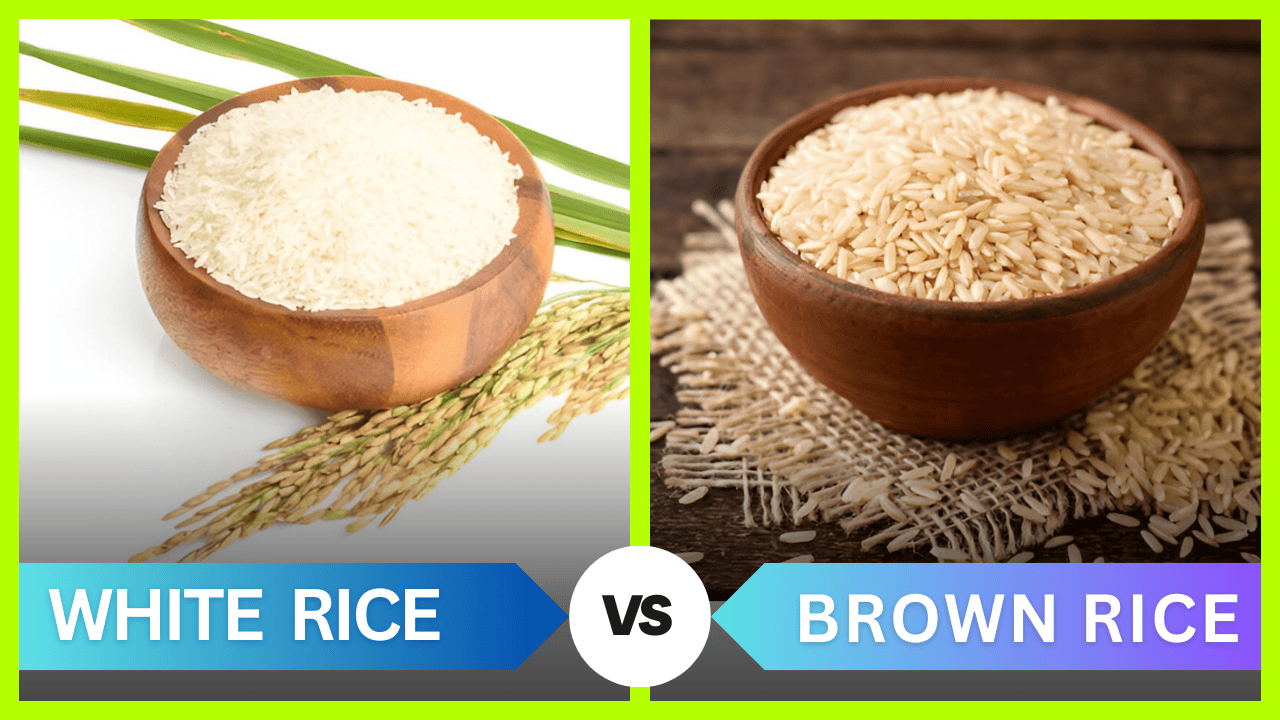


Rice is one of the most consumed staple foods around the world, it plays an important role in the diet in different cultures. In India, rice is a daily requirement, available in different types and properties. When it comes to choosing a healthy alternative, the debate between white rice and brown rice continues. Moreover, Both have unique nutritional benefits, but which one is better for you? white rice vs brown rice this blog will find out the biggest differences, nutritional value, health benefits, and factors before choosing the blog.
Whether you are looking for high-quality rice at competing Indian rice prices or requiring Shah Enterprises’ premium grains, this guide will help you make an informed decision.
The primary difference between white rice and brown rice lies in their treatment. Brown rice is a complete grain that retains bran and germ, which contain essential nutrients, fiber, and antioxidants. As a result, white rice is milled and gets a shiny finish, removing the outer layers and giving it a delicate texture and milky taste. While white rice is easy to digest, brown rice provides more nutritional value due to its high fiber and vitamin content. Here are key difference between White Rice and Brown Rice
| Feature | White Rice | Brown Rice |
|---|---|---|
| Processing | Highly processed, outer layers removed | Less processed, retains bran and germ |
| Nutrient Content | Lower in fiber, vitamins, and minerals | Higher in fiber, vitamins, and minerals |
| Texture & Taste | Soft, fluffy, mild taste | Chewy, nutty flavor |
| Cooking Time | Cooks faster | Takes longer to cook |
| Health Benefits | Quick energy source but lower in fiber | Supports digestion, heart health, and weight management |
| Best For | Everyday meals, biryanis, and fried rice | Healthy diets, weight loss, and diabetes management |
The nutritional profile of white rice and brown rice varies significantly. Below is a comparison of key nutrients per 100 grams of cooked rice:
As shown in the table, brown rice is rich in essential vitamins and minerals, especially magnesium and phosphorus, which contribute to better bone and muscle health. As a result, white rice, on the other hand, provides a small amount of iron, which is beneficial for red blood cell production.
It is important to understand the calories and macronutrient content of rice to make dietary decisions. Here is described how to compare white rice and brown rice:
Brown Rice: 111 kcal per 100 grams, with more fiber and protein.
White Rice: 130 kcal per 100 grams, with slightly lower fiber content but easily digestible carbohydrates.
For individuals focusing on calorie intake, brown rice can be a better alternative, as it provides more satisfaction with fewer calories.
There is no doubt that brown rice is an excellent source of fiber, helps with digestion, and improves intestinal health. A high fiber content prevents constipation by regulating bowel movements. However, white rice removes minimal fiber due to removing the bran layer. While white rice is milder on the stomach, brown rice supports long-lasting digestive health and reduces the risk of bloating.
Both brown rice and white rice contain essential vitamins and minerals, but brown rice is better due to its whole-grain nature. It is rich in B vitamins, which support metabolism and brain function. Brown rice magnesium helps with nerve function, while phosphorus contributes to strong bones. Although white rice lacks many of these nutrients, some commercial brands strengthen it to compensate for losses.
The glycemic index (GI) measures how fast foods increase blood sugar levels. Brown rice has a low GI (50–55), making it a better option for people with diabetes or who handle blood sugar levels. White rice, with a high GI (70-75), can cause sharp spikes in blood sugar, making it less suitable for individuals with insulin resistance or diabetes.
The glycemic index (GI) measures how fast foods increase blood sugar levels. Brown rice has a low GI (50–55), making it a better option for people with diabetes or who handle blood sugar levels. White rice, with a high GI (70-75), can cause sharp spikes in blood sugar, making it less suitable for individuals with insulin resistance or diabetes.
Weight Management: High fiber completes you for a long time, reducing unnecessary snacking.
Heart Health: Antioxidants and healthy fats help reduce cholesterol.
Diabetes Control: A lower glycemic index supports stable blood sugar levels.
Better Digestion: The rich fiber content promotes a healthy intestinal microbiome.
Quick Energy Boost: High carbohydrate content provides immediate energy.
Easy Digestion: People with digestive problems recover from illness more easily.
Better for Certain Diets: Low fiber works well for people who require food.
Fortified Nutrients: Some mark white rice with iron and B vitamins.

If losing weight is your goal, brown rice is a better option because of the fiber content, which promotes weight management and prevents the transition. Brown rice also has a low calorie density, making this part an excellent food for control. However, white rice can still be included in a balanced diet if consumed in moderation.

For people managing diabetes, brown rice is the preferred choice because of its lower glycemic index. It helps prevent sharp blood sugar spikes and provides a steady release of energy. If consuming white rice, pairing it with protein or fiber-rich foods can help slow down its absorption.
Choosing between brown rice and white rice depends on individual dietary requirements:
At Shah Enterprises, we offer high-quality brown and white rice at competitive Indian rice prices, ensuring that you have access to premium grains for your dietary and health needs.
Both brown rice and white rice have their own benefits, and the best option depends on your health goals and lifestyle. Moreover, Brown rice provides high nutritional value, making it ideal for weight management, diabetes control, and heart health. On the other hand, white rice is a good choice for those who need easily digestible carbohydrates and a rapid energy source.
If you are looking for top-quality 1121 steam basmati rice for the most competitive Indian rice prices, Shah Enterprises offers a wide range of premium rice to meet each need. Choose wisely and enjoy both the world’s best by including the right rice in your diet for a healthy lifestyle!
Brown rice is healthier than white rice as it retains more fiber, vitamins, and minerals. It has a lower glycemic index, making it a better choice for weight management and diabetes control.
Brown rice, black rice, and red rice are considered the healthiest due to their high fiber, antioxidants, and essential nutrients that support heart health and digestion.
Yes, you can eat brown rice daily as part of a balanced diet. It provides essential nutrients and fiber but should be consumed in moderation to avoid excessive arsenic intake.
Black rice is the healthiest due to its high antioxidant content, followed by brown rice, which is rich in fiber. White rice is the least nutritious but still a good energy source.
Yes, brown rice is better as it contains more fiber, vitamins, and minerals. It supports digestion, weight management, and overall health, unlike white rice, which is more processed.
Brown rice and black rice are best for muscle building as they provide complex carbohydrates, fiber, and essential nutrients that support energy levels and muscle recovery.